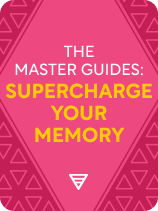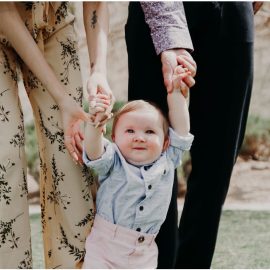

This article is an excerpt from the Shortform book guide to "The Master Guides: Supercharge Your Memory" by Shortform. Shortform has the world's best summaries and analyses of books you should be reading.
Like this article? Sign up for a free trial here.
Does multisensory learning work? What techniques can you use to solidify memories using your senses?
Multisensory learning works by tying new memories to existing webs of association. By incorporating multiple senses into your learning practice, you can create stronger networks of association and remember things more clearly.
Continue reading to learn the four best techniques for multisensory learning.
Why Multisensory Learning Works
Multisensory learning changes the way that memories are formed, and experts agree that creating multisensory associations when taking notes can greatly boost their effectiveness as memory aids.
Experts suggest incorporating as many of your senses as you can into your mental representations of things you want to remember. The more senses you incorporate, the more cues you have to remind you of the memorized information. If applicable, imagine how something looks, smells, sounds, feels, and tastes.
The reason for this is that connecting an idea to inputs from more senses creates more synaptic connections in more neural pathways in your brain. This makes it easier to learn and remember because there are more neural pathways your brain can use to retrieve the idea.
Using Multisensory Learning Techniques
The following four methods will help you use multisensory learning to improve your memory in a variety of contexts.
1) Integrate Your Existing Knowledge
Experts have shown that association is the basis of all learning—in order to learn new information, that information has to be connected to a concept or piece of information you already know. Therefore, you should always try to link any new information to ideas you’re familiar with.
YouTuber and content creator Jade Bowler (The Only Study Guide You’ll Ever Need) illustrates this advice with a practical example: Imagine you have to memorize the purpose of white blood cells—to fight diseases in the body. It might be hard to remember this information alongside all the other information on an exam. However, if you’re able to connect the purpose of white blood cells to the purpose of a concept you’re already familiar with and can easily visualize, like the mythological “white knight” who comes to someone’s aid, it’ll be easier to remember.
Meanwhile, others suggest that you can relate new information to ideas you’re already familiar with by using acronyms or mnemonics to create metaphors—and that you can make your metaphors even more memorable if you make them humorous.
For example, to memorize biological taxonomy, you could come up with the mnemonic sentence “King Phillip cleaned orange fungus off Jenny’s spectacles,” where King = kingdom, Phillip = phylum, cleaned = class, orange = order, Jenny = genus, spectacles = species. This connects the abstract taxonomy to a scene you can visualize. Then, to make it even more memorable, you add more sensory detail and humor: What does the fungus smell like? Why did Jenny have orange fungus on her spectacles? (There could be a comical backstory behind that.) Opening yourself up to multisensory learning increases the breadth of existing knowledge that you can tie new memories to.
2) Engage Your Visual Memory
According to magician and memory expert Harry Lorayne and former NCAA and NBA basketball player Jerry Lucas (The Memory Book), mentally picturing the thing you want to remember is a great tool for memory creation. Sight is deeply connected to memory, so it is valuable to include in your multisensory learning strategies. When you see information, you’re more likely to retain it. They explain that it’s easier to remember information (such as a word) that has a concrete meaning than information that’s abstract and intangible. This applies when using visualization techniques, as something has to have clear, concrete meaning for you to picture it.
For example, names are often more difficult to remember than other words because they don’t have any specific image or meaning associated with them. You likely can’t form a picture of a name like “Julie” by itself, but you can picture a word that has tangible meaning, like “horse.” However, in Unlimited Memory, International Grandmaster of Memory Kevin Horsley says that if you create a visual association with a name—for example, by picturing Julie’s face covered in jewels, the name will be easier to recall.
Here is another practical visualization technique you can apply: Place images of whatever you need to remember inside a “memory palace,” which is a memory of a real place you know very well, such as your childhood home. For example, if you want to memorize your shopping list—blueberries, crackers, cereal, and beer—you might mentally place the blueberries in the mailbox at the end of your driveway, the crackers on the front lawn, the cereal in front of the front door, and the beer on the entranceway mat. When you need to remember the list, you simply mentally tour your memory palace and look for the objects you left in significant locations.
Bowler’s visualization technique is to connect elements of a concept to parts of a physical object. This way, when you look at the object, it will help you remember the elements of the concept. For example, connect the three main stages of the hydrologic cycle to your water bottle: First is evaporation—you can connect this stage to the top part of your water bottle that’s foggy because of evaporation. Next is condensation—you can connect this to the water droplets inside your bottle and imagine that they’re the product of condensation, like raindrops. Finally, connect precipitation to the water sitting at the bottom of your bottle—imagine this is the rainwater that has fallen and collected.
3) Activate Your Emotions
Information is easily forgotten; however, feelings are memorable. If you can add emotions to what you’re learning—make it exciting, adventurous, or poignant—then you’ll be much more likely to remember it. You’ve probably experienced this phenomenon before: Think back to a time when you got some extraordinary piece of news (either good or bad). You probably remember where you were and what you were doing at the time, even if it was many years ago. Including emotional associations in your approach can enhance your multisensory learning experience.
You can add emotions to written material by breaking sections of a text into small chunks and assigning them emotions rather than images alone. For example, when studying the water cycle, you could associate each phase with a distinct emotion: Link evaporation to “curiosity” as the water ascends, condensation with “togetherness” as droplets merge to form clouds, and precipitation with “joy” as water joyfully returns to the Earth.
4) Punning
Punning is another practical method for creating multisensory associations. It involves changing an abstract word into a concrete word by using rhymes or puns. You can also employ alliteration or repetition. For example, to remember the title of the book The Joy of Cooking, you might picture a boy who’s good-looking. Additionally, punning can be used to memorize word-for-word. For example, mental athletes—those who compete in mental challenges—assign images to words like “and” and “the” and then picture a string of images to remember the exact words. One German mnemonist remembers the word “and” by picturing a circle because the German word for round, “rund,” rhymes with “and.”
Exercise: Create Multisensory Associations
Experts suggest that incorporating sensory information can enhance memory recall. Let’s practice creating multisensory associations to remember information more effectively.
- List the titles of four random movies. (For example, you might list E.T. the Extra-Terrestrial, Jaws, Star Wars III, and Ratatouille.)
- How would you associate imagery with the first movie on your list? (For example, for E.T. the Extra-Terrestrial, you might visualize the iconic flying bicycle silhouette against the moon.)
- How would you associate sound or music with the second movie on your list? (For example, for Jaws, you might recall the ominous two-note motif representing the approaching shark.)
- How would you associate a physical sensation with the third movie on your list? (For example, for Star Wars III, you might imagine the weight and hum of wielding a lightsaber.)
- How would you associate a specific smell with the fourth movie on your list? (For example, for Ratatouille, you might recall the rich aroma of freshly cooked French cuisine.)

———End of Preview———
Like what you just read? Read the rest of the world's best book summary and analysis of Shortform's "The Master Guides: Supercharge Your Memory" at Shortform.
Here's what you'll find in our full The Master Guides: Supercharge Your Memory summary:
- Memory retention methods from a diverse group of experts
- Three techniques for enhancing your note-taking abilities
- Three active learning strategies to help you solidify your long-term memory






